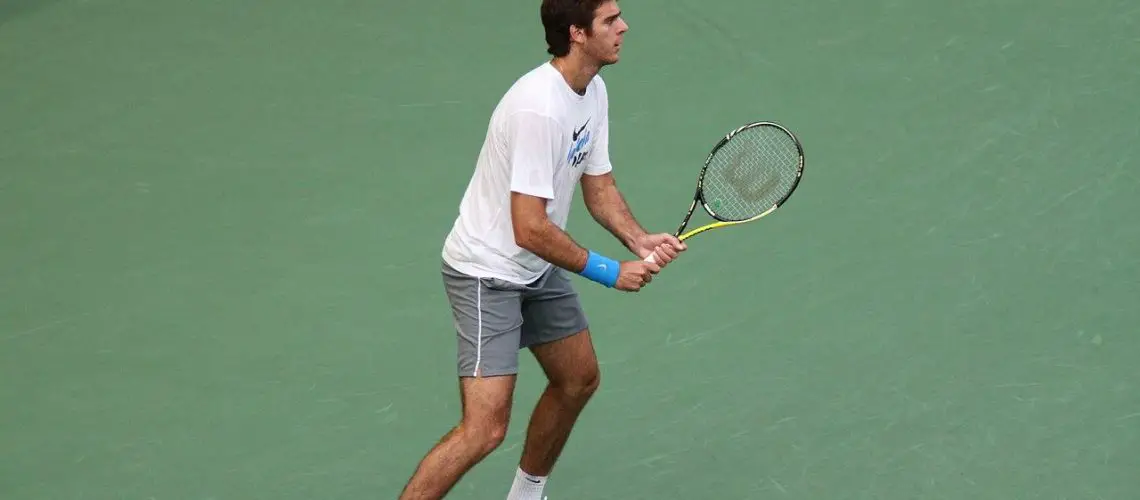We may earn money or products from the companies mentioned in this post.
Brief Overview of Tennis Match Suspensions

When it comes to tennis, match suspensions are not uncommon These interruptions can happen for various reasons, ranging from unpredictable weather conditions to technical issues at the venue Understanding the causes behind these suspensions is crucial for players, spectators, and organizers alike
Causes for Suspension
Weather Conditions:
Mother Nature can be quite unpredictable, and rain showers or thunderstorms can quickly halt a tennis match The safety of the players is paramount, and playing in slippery court conditions poses a risk of injury
Darkness or Lack of Lighting:
As daylight fades away, matches may need to be suspended due to inadequate lighting on the court This ensures fair play and prevents any visibility-related accidents
Player Injury or Illness:
In unfortunate instances where players sustain injuries or fall ill during a match, suspending the game allows them time to recover or receive medical attention without compromising their performance
Technical Issues at the Venue:
Sometimes unexpected technical difficulties arise that hinder gameplay Whether it’s an issue with the scoreboard, net tensioning system, or any other equipment malfunctioning – suspending the match becomes necessary until these problems are resolved
The Importance of Understanding Suspension Rules and Regulations

Impact on Players’ Performance and Strategy
Suspension of a tennis match can significantly impact players’ performance and strategy Momentum is a crucial aspect in this sport, and interruptions disrupt the flow of play Players must adapt their mindset and adjust their tactics when they return to the court after a suspension
Implications for Spectators, Tournament Schedules, and Broadcasters
Tennis matches attract a large number of spectators, and suspensions can leave them disappointed Understanding the rules and regulations surrounding match suspensions helps spectators plan their day accordingly and manage their expectations
For tournament organizers, the schedule can be greatly affected by match suspensions Rescheduling matches becomes a challenge, sometimes requiring adjustments to accommodate unforeseen interruptions
Broadcasters who cover tennis tournaments also face challenges when it comes to live coverage They need to ensure that viewers are kept informed about any match suspensions and are provided with updates on when play is set to resume
Regulations regarding tennis match suspensions

ATP, WTA, ITF, and Grand Slam tournament rules
When it comes to regulating tennis match suspensions, various governing bodies like the ATP (Association of Tennis Professionals), WTA (Women’s Tennis Association), ITF (International Tennis Federation), and Grand Slam tournaments have their own set of rules in place While there may be similarities among these organizations’ regulations, there are also notable differences that cater to the unique needs and requirements of each tournament
-
Governing bodies’ regulations:
The ATP, WTA, ITF, and Grand Slam tournaments all prioritize player safety and fair play They establish guidelines to ensure that matches are conducted under suitable conditions -
Tournament-specific guidelines:
Individual tournaments have the flexibility to implement specific regulations within the framework provided by the governing bodies This allows them to address any unique challenges or considerations they may face based on factors like weather conditions or venue constraints
Factors influencing the decision to suspend a match
The decision to suspend a tennis match is not taken lightly and is influenced by several key factors that are carefully considered by referees, umpires, and officials involved in overseeing the game
-
The role of referees, umpires, and officials:
These individuals play a crucial role in monitoring on-court conditions during a tennis match They assess various factors such as court surface condition, visibility for players due to poor lighting or adverse weather conditions, or any other circumstances that could pose risks to fair play or player safety -
Assessing safety risks for players and spectators:
Safety is paramount in any sporting event, and tennis is no exception Referees, umpires, and officials must evaluate potential risks posed by extreme weather conditions like heavy rain, lightning storms, or strong winds that could compromise player safety or hinder fair competition
By adhering to the regulations set forth by governing bodies and considering factors that impact the integrity of the game and participants’ safety, tennis tournaments ensure that matches are conducted in a fair and secure environment
Duration of Suspension and Resumption of Play

When it comes to tennis matches, there are specific rules and guidelines in place regarding the duration of suspended matches Each tournament has its own policies on how long a match can be suspended before it must be resumed or potentially abandoned Additionally, there are general guidelines that most competitions follow to ensure fairness and consistency
Tournament-Specific Policies on Maximum Duration
In order to maintain a level playing field, tournaments establish their own policies on the maximum allowed time for suspended matches These policies take into account various factors such as court availability, player schedules, and overall tournament logistics Different tournaments may have different rules in place, so it’s important for players and officials to be aware of these regulations
General Guidelines Followed Across Most Competitions
While each tournament may have its own specific policies, there are some general guidelines that tend to be followed across most competitions One common rule is that if a match is unable to resume within a certain timeframe (usually determined by the organizers), it will either be abandoned or postponed to another day This ensures that matches do not extend indefinitely and allows for proper planning and scheduling
Process for Determining When to Resume Play
When a match is suspended due to unforeseen circumstances like weather conditions or other disruptions, officials play a crucial role in determining when play can safely resume They consider several factors before making this decision, including the severity of the interruption, player safety, court conditions after the suspension, and any potential impact on fairness Communication with players during the suspension period is also vital so that they stay informed about updates and can prepare accordingly for when play resumes
Notable Instances and Impacts of Lengthy Match Suspensions

Historic Suspended Matches in Professional Tennis History
Throughout the history of professional tennis, there have been several notable instances where matches were suspended and played over multiple days due to various interruptions These interruptions could be caused by weather, darkness, or other unforeseen circumstances These extended suspensions not only test the physical and mental stamina of players but also add an extra layer of drama and excitement for fans
Effects on Player Performance After Lengthy Delays
The impact of lengthy delays on player performance is a subject of much discussion in the tennis world When matches are interrupted for an extended period, players must find ways to stay mentally focused and physically prepared during the suspension The interruption can disrupt their rhythm and momentum, potentially leading to changes in strategy or performance upon resumption of play
Lessons Learned from Past Experiences

Adjustments Made by Tournaments to Minimize Disruptions
Tournaments have learned from past experiences and implemented various adjustments to minimize disruptions caused by match suspensions This includes improved scheduling techniques, better monitoring of weather conditions, provision of covered courts or retractable roofs in certain stadiums, and enhanced communication with players and officials regarding potential delays
Strategies Employed by Players to Cope with Unpredictable Suspensions
In response to unpredictable match suspensions, players have developed strategies to cope with the uncertainties that come with prolonged breaks in play They may engage in physical warm-ups or practice sessions during the suspension period to maintain their fitness levels Additionally, mental preparation becomes crucial as players need to stay focused despite the uncertainty surrounding when they will be back on court
Useful Links

Sports – Tennis Rules – Help
Australian Open heat policy: When are matches suspended?
Your guide to when and how a match may be safely …
Live Betting Tennis Rules
Experience Miami Open Tennis Tournament
TABLE 12 Time Allowed Between Sets
Table Tennis Rules
Time Violations & Penalties for Lateness
Australian Open in chaos as rain hammers Melbourne …
Wimbledon’s Last Man Standing: Isner and Mahut Match …
Tennis player suspended three years after admitting to …
rulebook
Australian Open rocked by ball kid incident as play …
Tennis.com | Tennis Live Scores, News, Videos, Player …
Match fixing in tennis
Heat Rule – The Championships, Wimbledon
2020 OFFICIAL GRAND SLAM RULE BOOK
BNP Paribas Open play resumes after rain delay
Does Interrupting a Match Impact the Outcome?
Modern Sport Ethics – Google Books Result






